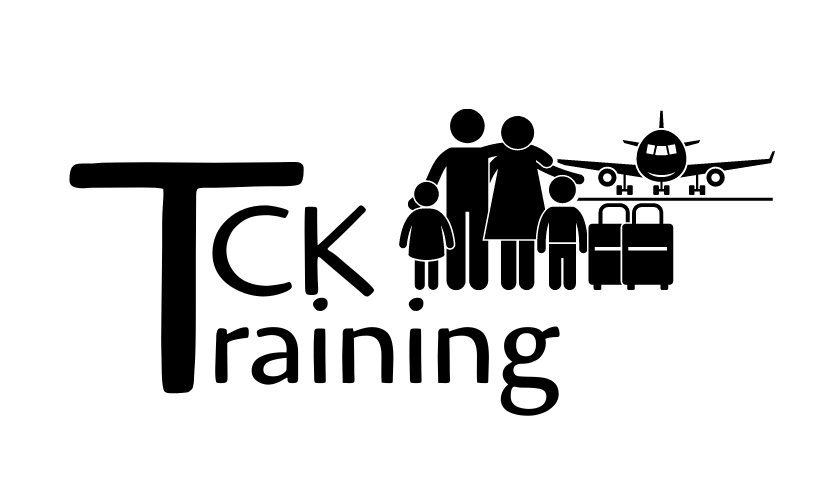Frequent Moves Put Military Kids at Risk. Here’s How You Can Mitigate Risk Even When the PCS Moves Continue.
The military kid population is one that we have often heard feels left out when looking at the Third Culture Kid (TCK) demographic. Though many lived abroad during their developmental years, we have heard sentiments such as, “but we lived on base overseas so we basically just lived in a little America.” While there may be some truth to this, our research shows that many risk factors that we’ve seen in the TCK population can also be applied to the military kid population - especially for those who experience many relocations.
Risk Factors for Military Kids
Our research shows that one of the greatest risk factors for high ACE scores is high mobility. ACE scores are a long-used metric for quantifying the types of trauma a child is exposed to throughout their childhood. A score of between 0-10 is assigned, with scores of 4 or higher associated with higher levels of negative health outcomes in adulthood.
Military Kids in the USA
Our data lines up with existing research into the experiences of the 1.6 million American military kids moving within their own passport country (domestic Third Culture Kids). On average, they move every 2-3 years (6-9 times), changing schools 6-8 times.(1) This means they move three times more often than their non-military peers, with 80% attending local public schools.(2) Existing research already shows the negative impact that mobility can have on children generally, and military kids - both domestic and globally mobile - experience much more mobility.(3) The average mobility of domestic American military kids is high, so it follows that a large number will fall in the category of “extreme mobility” of 10+ moves used in our survey of globally mobile TCKs.
In addition to survey questions, we had an optional open comment section. Military kids of various generations commented on the impact mobility had on their long term emotional health as adults. For example:
Why Preventive Care Matters
Despite the risk factors, there are ways to increase the likelihood of military kids growing into healthy adults even if their childhood is filled with high mobility and other risk factors. The key is their support systems.(7) The support systems can provide two prevention and protection methods: Positive Childhood Experiences (PCES) and opportunities for grief processing.
Positive Childhood Experiences (PCES)
Positive Childhood Experiences can be thought of as the buffer that keeps a child resilient despite challenges they’re facing. PCEs have been proven to counteract the negative effects of high ACE scores and it was found that having 6-7 PCEs even lowers rates of mental illness in adults with high ACE scores by 72%. These are powerful protective factors.
- Feeling that when they express difficult emotions, they are heard and validated by their parents
- Feeling physically safe in the home
- Feeling their parents stand by them during difficult times and would choose them over their career
- Feeling supported by a peer group
- Feeling a sense of belonging within a larger, multigenerational group
- Having routines and traditions to look forward to
- Feeling a sense of belonging in high school/secondary school
- Having two non-parent adult relationships who take a genuine interest in them
At TCK Training, we work with families to help them find creative ways to implement PCEs despite their circumstances.
Grief Processing
Another way we need to be supporting our military kids is in the area of Grief Processing. In the book, The Grief Tower: A Practical Guide to Processing Grief with Third Culture Kids, Lauren Wells talks about how grief for expat children stacks up with every loss and hardship (friends that move, relocations, experiences of intense fear, medical crises in the family, etc.). Each of these alone may not seem like more than a minor challenge, yet we see that when they continue to stack up during the developmental years and are not processed in an emotionally safe space, they have a profound impact on health in adulthood. We often see this manifest as Complex-PTSD in early adulthood.
While the book refers to expat children, the experience of transition grief is common to military kids whether or not they leave their passport country. This quote sums up perfectly these grief-related challenges:
As you begin to process how you’ll provide your military kids with preventive and protective care, know that TCK Training has resources to educate and support you. A great place to start would be our Raising Thriving Military Kids Abroad workshop, or browsing our other resources for globally-mobile military families. You can email us at info@tcktraining.com for more information!
Endnotes:
Crossman, T & Wells, L (2022) “Caution and Hope: The Prevalence of Adverse Childhood Experiences in Globally Mobile Third Culture Kids,” TCK Training.
Crossman, T (2022) “Caution and Hope for Military Kids,” TCK Training, last accessed July 2022.
(1) U.S. Department of Defense, “Military Family Support,” last accessed July 2022.
(2) American Association of School Administrators, “Fact Sheet on the Military Child,” last accessed July 2022.
(3) Examples of this research include: Pribesh, S., & Downey, D. B. (1999).,“Why are residential and school moves associated with poor school performance?,” Demography, 36, 521–534; Simpson, G. A., & Fowler, M. G. (1994), “Geographic mobility and children’s emotional/behavioral adjustment and school functioning.” Pediatrics, 93, 303–309; Wood, D., Halfon, N., Scarlata, D., Newacheck, P., & Nessim, S. (1993), “Impact of family relocation on children’s growth, development, school function, and behavior,” Journal of the American Medical Association, 270, 1334–1338.
(4) Kelley, M. L., Finkel, L. B., & Ashby, J. (2003), “Geographic mobility, family, and maternal variables as related to the psychosocial adjustment of military children.” Military Medicine, 168, 1019–1024; Mmari, K. N., Bradshaw, C. P., Sudhinaraset, M., & Blum, R. (2010), “Exploring the role of social connectedness among military youth: Perceptions from youth, parents, and school personnel,” Child and Youth Care Forum, 39, 351–366; Kitmitto, S., Huberman, M., Blankenship, C., Hannan, S., Norris, D., & Christenson, B. (2011), “Educational options and performance of military-connected school districts research study – final report.” San Mateo, CA: American Institutes for Research.
(5) Bradshaw, C. P., Sudhinaraset, M., Mmari, K., & Blum, R. W. (2010), “School transitions among military adolescents: A qualitative study of stress and coping.” School Psychology Review, 39, 84–105.
(6) Ibid; Mmari et al (2010); Sherman, M. D., & Glenn, M. A. (2011), “Opportunities for school psychologists working with children of military families,” Communiqué: The Newspaper of the National Association of School Psychologists, 39(5), 17–19.
(7) Strobino, J., & Salvaterra, M. (2000), “School transitions among adolescent children of military personnel: A strengths perspective,” Social Work in Education, 22, 95–107.
(8) Ruff, S. Beth & Keim, Michael A. (2014), "Revolving Doors: The Impact of Multiple School Transitions on Military Children," The Professional Counselor, Vol.4, Is.2, p104.




